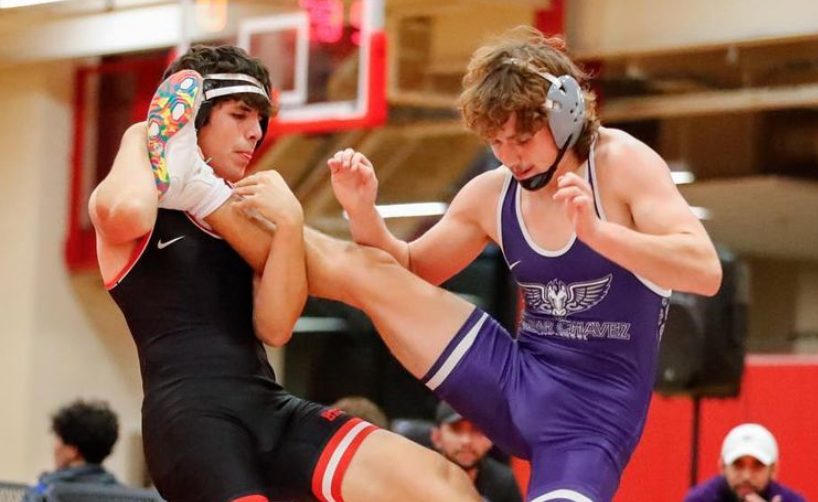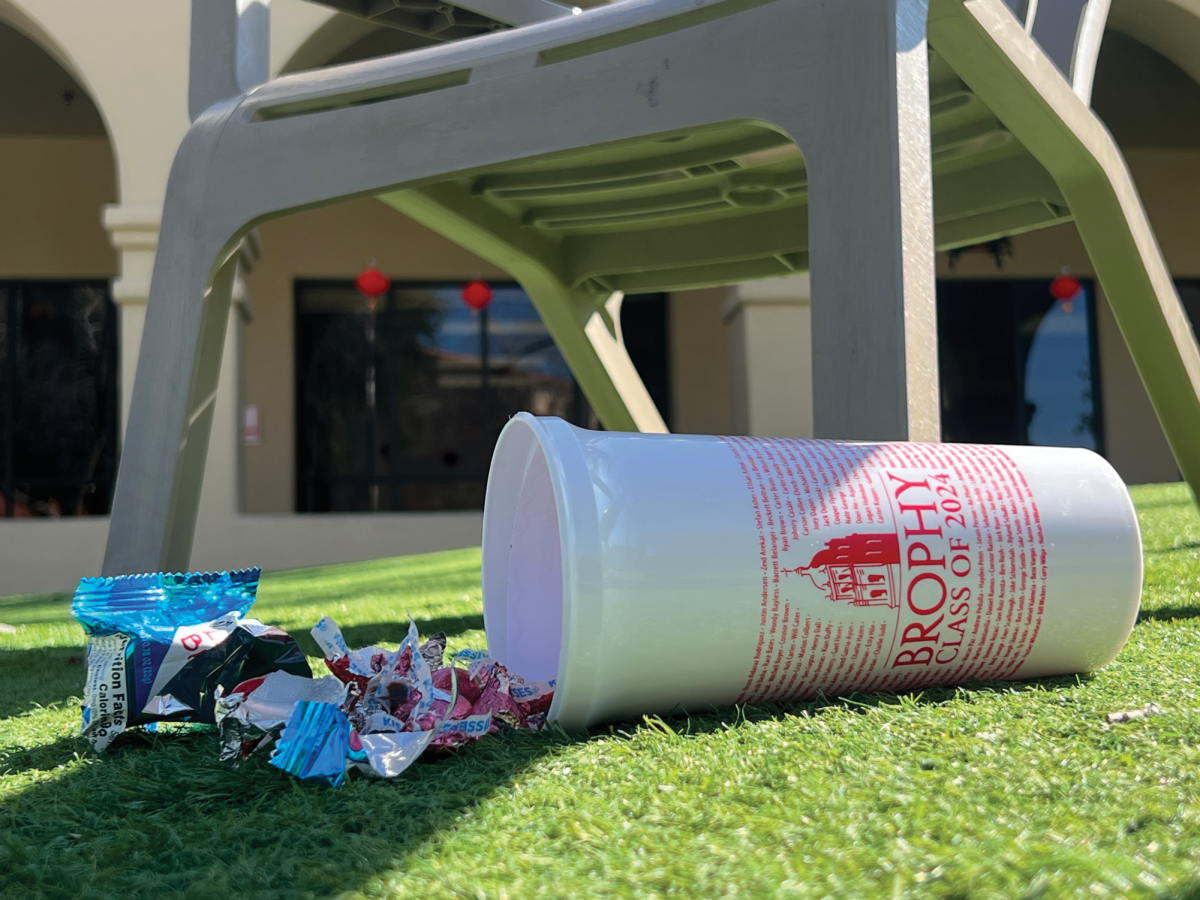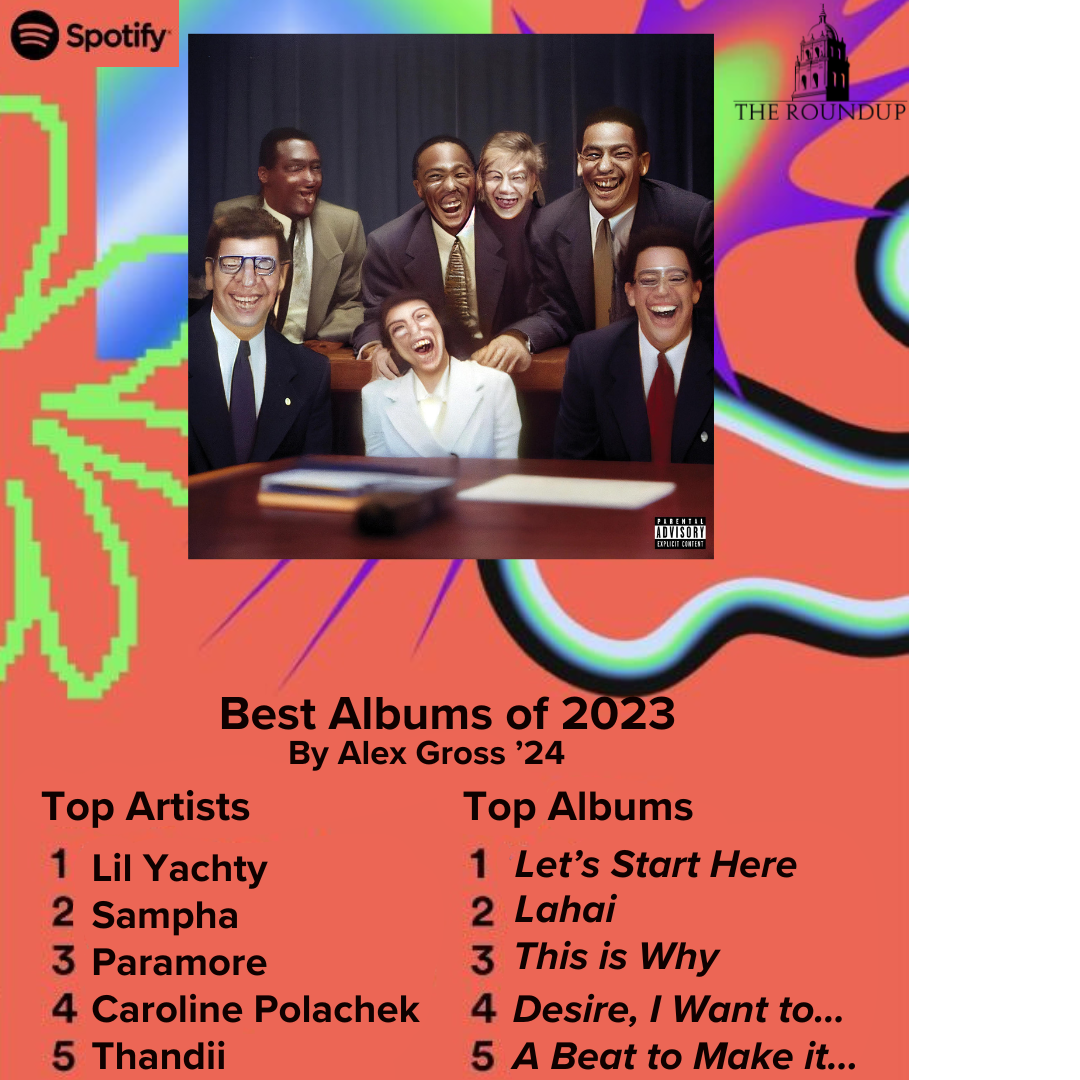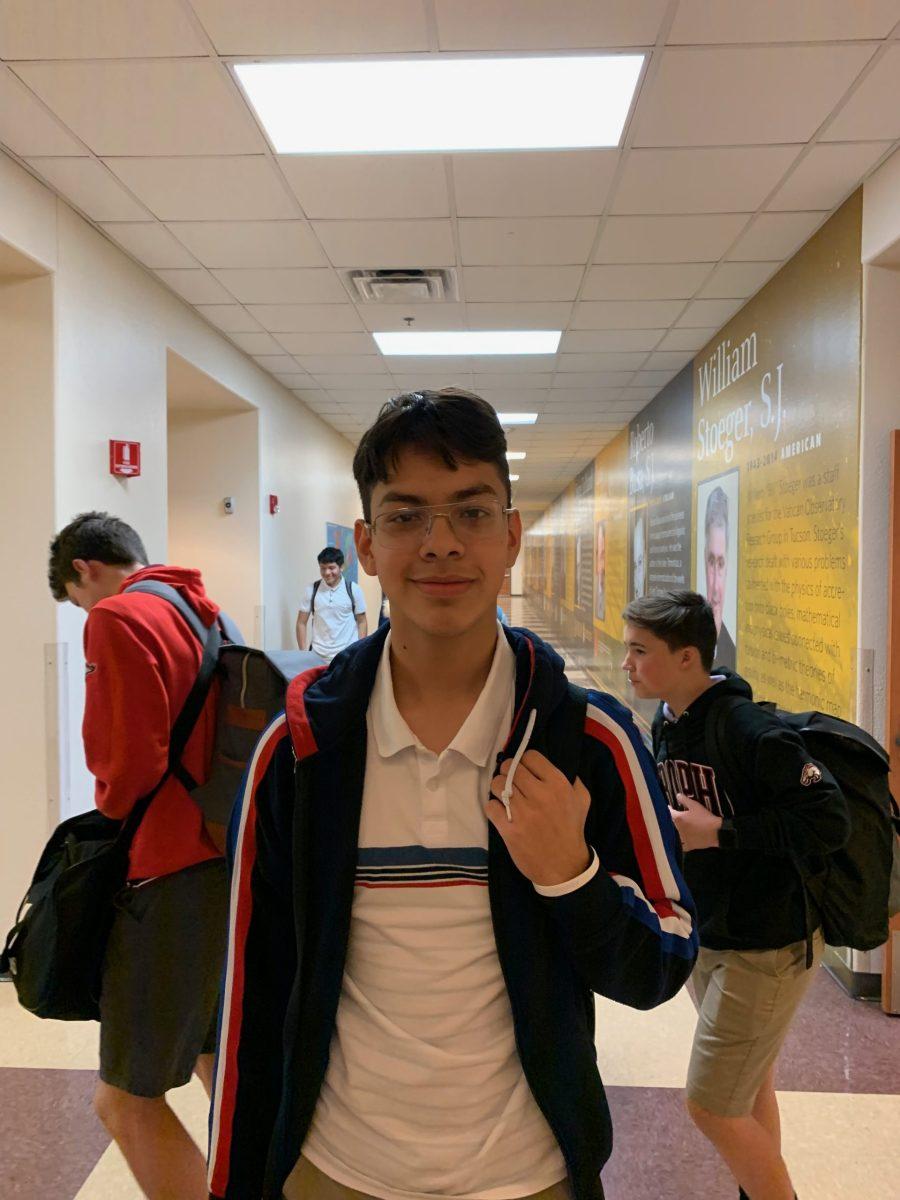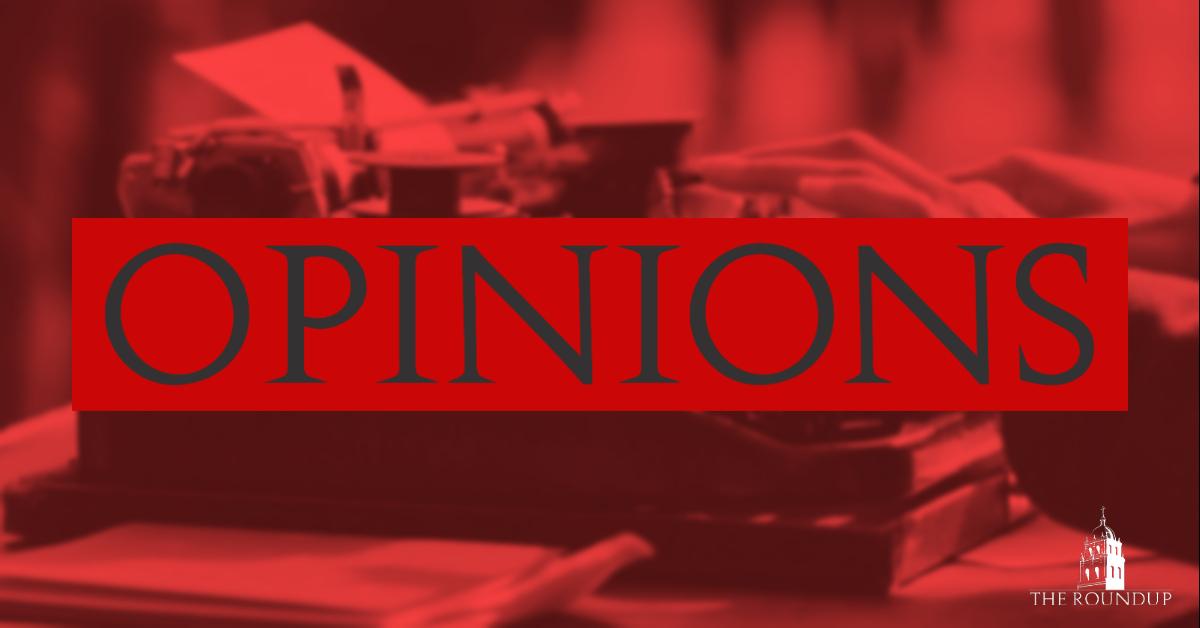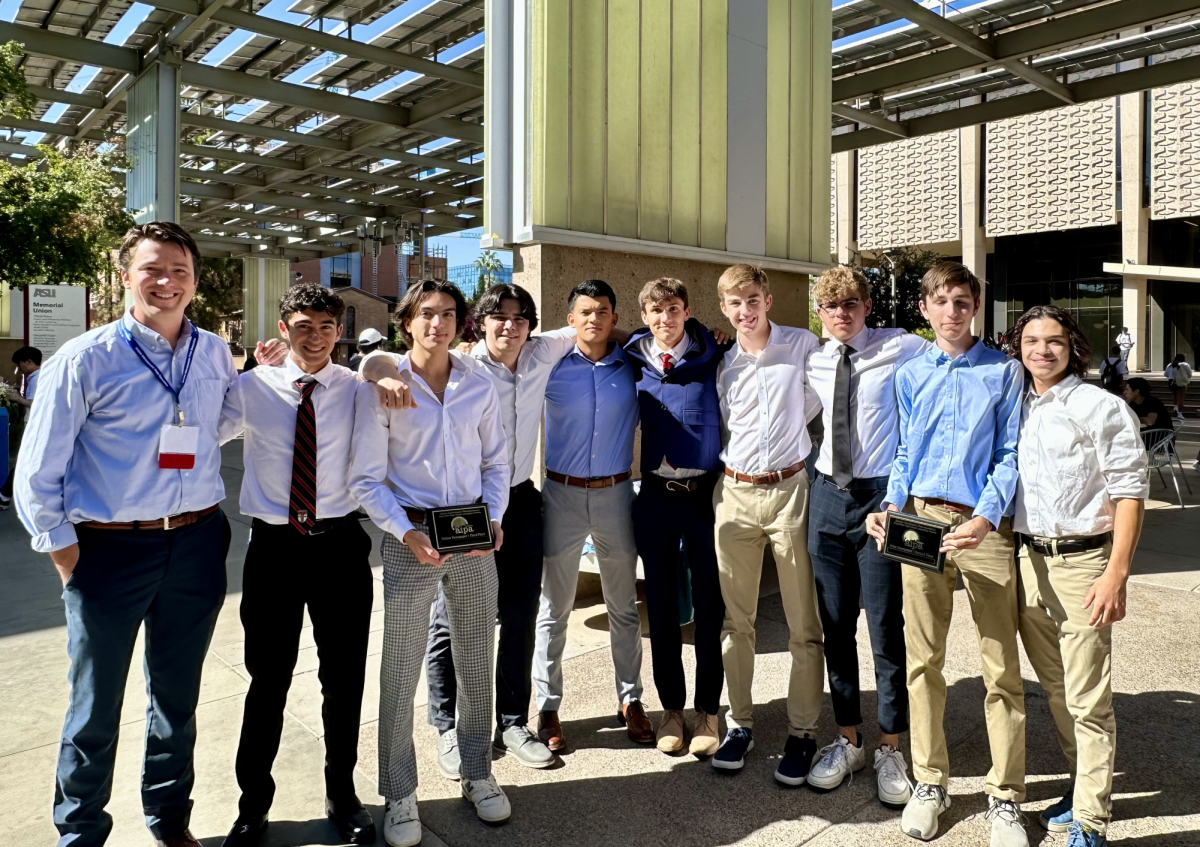By Ryan Loo ’21, Jackson Moran ’21 and Garret Van Wie ’22
THE ROUNDUP
At the beginning of the year, following the murder of George Floyd, Brophy’s President Ms. Adria Renke and Principal Mr. Bob Ryan released a public statement regarding the racial tension plaguing the nation, saying, “We know that the racism that continues to permeate our society is not a force of nature or biology. It is the legacy of 400 years of oppression committed against communities of color.”
Brophy later announced its anti-racist commitment, alongside a series of events and resources for talking about, and engaging with, race.
Around the same time, Xavier’s administration posted a public statement that denounced racism and affirmed the “God-given sanctity of each person’s life.” Xavier later announced a coordinated community prayer effort and a three-part anti-racist plan.
However, despite these outspoken commitments, Brophy and Xavier students of color have indicated that they still encounter and experience racism on campus.
During Brophy’s annual Summit on Human Dignity: Challenging Racism, Jonathan Phan ’22 said he witnessed a classroom conversation that left him jarred and unsettled.
Phan said that he, along with classmates, listened for over ten minutes as a student had, what he called, a “bad faith argument” with a teacher over Breonna Taylor’s innocence and allegedly insinuated that she was guilty and complicit in her own death.
Though Phan indicated that the teacher didn’t encourage or agree with the rhetoric put forth by the student, Phan said he believed that the discussion was mishandled.
“Instead of immediately shutting down that argument and recognizing it as a bad faith argument … the teacher entertained that argument for just way too long,” Phan said.
Phan said he told the teacher after class, “There’s no excuse … to entertain that conversation for more than a minute.”
While Phan said that the faculty member agreed with him regarding his analysis of the conversation and hoped to be more cognizant of such matters in future conversations, the damage was already done.
Stories of such incidents are not isolated.
Biplove Baral ’21 also said he experienced disrespectful and hurtful conversations throughout the duration of the Summit.
During one speaker’s talk over Zoom, Baral said he was messaged, “We all know I don’t care about this,” by another Brophy student.
In another conversation regarding Summit keynote speaker Mr. Eugene Scott, Baral and another student indicated that a fellow classmate made racist statements about the speaker, saying that it was admirable that Scott immigrated from Africa and bought land and brought hope to America.
Mr. Scott was born in Washington, D.C.
“[The student] had the nerve, in front of a teacher, to say that,” Baral said.
According to Baral, while the teacher acknowledged the statement and scolded him passive aggressively on the spot, the student faced no further repercussions.
“Nothing really happened to him, he just kind of got away with it,” Baral said, “Besides hearing one snarky comment from the teacher, that was about it.”
In response to student criticisms of the summit, Mr. Ryan said, “I don’t think there’s anything that we could have done better –– the work is hard.”
“There’s a desire that … if we just find the right speaker, or if we just develop the right course, or if we just put the right assembly together, then it will all be better,” Mr. Ryan said, “But with a country, we’re dealing with four hundred years worth of baked-in violence –– physical violence, structural violence –– that’s wired into our DNA as Americans and particularly white Americans. It’s just hard work. You just can’t undo that overnight.”
Regarding students who are unreceptive to Brophy’s social activism mission and do not listen to Summit teachings, Mr. Ryan said, “It’s frustrating, but it’s also a reminder of our brokenness as human beings.”
“We need to remain committed to the work and not have any illusions that we’re going to be able to fix it. Living in the unfinished space is part of our calling,” Mr. Ryan said, “ That’s not to suggest that I’m satisfied at all with the fact that it’s unfinished, but … that’s part of the struggle –– it’s long, it’s hard, and we may not see the end. We probably won’t. But that doesn’t mean that we shouldn’t be engaged in it.”
However, the reality of these classroom conversations — with little or insignificant moderation from teachers to quell inflammatory, racist or hateful speech — is that it places an unfair burden on students of color to defend their own existence and attempt to facilitate safe conversations.
“As a country –– as a school community –– we need to talk more about race. And the inherent dilemma that I struggle with is how do we actually talk about it in a way that’s honest and transparent, that enables those who have work to do … to wrestle with the things they need to wrestle with?” Mr. Ryan said, regarding the allegations of students saying inflammatory comments in classroom discussions, “How do we do it in a way that doesn’t further burden our students or our community members of color? I think that’s an incredible challenge.”
As one of a few students of color in his classroom, Phan constantly shoulders this burden in classroom discussions geared to tackle and dissect issues of race and racism.
“A lot of times, the burden falls on us,” Phan said, “It’s like, maybe three of us in the classroom trying to argue … with white kids to break down racism and explain it to them.”
During the Summit, Phan conducted a Brophy Culture Project poll in his breakout rooms that indicated a majority of students of color attending his events felt as though the Summit and its programming was geared toward white people rather than people of color.
The use of students of color as “talking points” rather than being centered in the conversation was clear to Phan in one of his classes, in which Phan said the teacher allegedly “has a habit of … using Black people as a token.”
“In class, he was discussing abortion and … he kept arguing that abortion was wrong because it targeted and murdered Black babies, which was not necessarily true,” Phan said, “It was just kind of a weird way of using Black people and their lives as a political talking point instead of actually addressing Black folks as people.”
Phan said his experiences haven’t all been bad, though.
When Phan, the only Vietnamese student in his class, voiced his discomfort at reading and discussing “The Things They Carried” — a novel about the Vietnam War from an American soldier’s perspective, in which the there are “no Vietnamese people … except for the one’s killed” — Mr. John Damaso ’97 offered him an alternative reading, entitled “The Sympathizer,” that told the story of the Vietnam War from a Vietnamese perspective.
These personal accounts of uncomfortability in racially charged settings, as well as exposure to and experiences with racism, extends far beyond the classroom.
During his freshman year, Elijah Jenkins ’22 — who is African American and Asian — said he had fellow students sing the n-word around him, as they didn’t expect him to have the same adverse reaction to their language as another Black person who was not mixed.
“They think, ‘Since Elijah’s not a fully Black person, it’s acceptable,’” Jenkins said.
“A lot of the white students, in particular, tend to have their own visions of what a Black person should be,” Jenkins said, “ And oftentimes, people like me who are mixed and don’t do what stereotypical Black people should do, it … overshadows our reality.”
Snide comments with racist undertones, such as “Eljah, you know what it’s like to be in the hood,” were not rare to hear, either, he said.
Baral has also encountered similar situations with Brophy students, as he’s been called names such as Dr. Curry, curry muncher and Baljeet — referencing a stereotypical Indian character in the animated show “Phineas and Ferb” — even despite the fact that he’s Nepalese and not Indian.
“These microaggressions aren’t necessarily huge, but it’s … unsettling,” Baral said.
Phan also experienced comparable microaggressions and acts of racism from fellow students on campus.
“Freshman and sophomore year, I was primarily friends with white people and there was a lot of internalized racism on my end,” Phan said, “It was a lot of letting them make racist jokes to try to fit in and get that white approval.”
On multiple separate occasions, Baral said he has also had students openly question and scorn his ‘Black Lives Matter’ t-shirt, with one student going as far as to confront him, saying, “Why the f— are you wearing that shirt? Does my life not matter?”
However, Baral noted that he believes the aforementioned incident came from a place of ignorance rather than malignant intent.
Unfortunately, this omission of malignant intent does not encompass all of Baral’s experiences.
Baral said that he, along with a handful of other students of color during the Summit, witnessed white students invalidate students of color’s experiences during classroom conversations, telling them that their perspectives and lived experiences were false and “racist.”
“They were telling us that our experiences were invalid — that when we enter a room and recognize race, that that’s somehow a reflection of our own racist tendencies … and that it’s wrong to feel that way,” Baral said.
Multiple students of color interviewed noted that they have seen little to no repercussions for students who step out of line and say hurtful, inflammatory or racist comments in classroom discussions.
Brophy does an amazing job addressing issues of race and racism and the discussions around these topics are incredibly effective, Baral said.
“But that only does so much,” he added.
For Brophy to progress a step further in their anti-racist action, they must “acknowledge that the student body is fundamentally flawed,” Baral said, adding, “Brophy will never do that. You have to acknowledge that there are students at Brophy who willfully stay ignorant — students who, even the principal, I guarantee, can point them out.”
Brophy administrators must be willing to acknowledge that they have racist students and single them out to discuss with them, so that they can learn about these issues and know that hateful speech is not tolerated, Baral said.
“That’s not happening on campus much,” he said.
Furthermore, both Baral and Phan said they witnessed Brophy administration deny them the ability to work with Alumnae for Change, an organization composed of current and former Xavier College Preparatory students that aim to “cultivate an atmosphere of equity and inclusion at [Xavier],” according to their website.
Baral was told that he could do that independently as students, but he can’t do that as a Brophy club.
When The Roundup asked Mr. Ryan for comment regarding Xavier and Alumnae for Change, he said, “I have no comment or position other than we have a lot of work to do here at Brophy and we are in no place to comment upon, or let alone criticize any other organization.”
“If a student, on their own, wants to be a part of that –– in the same way they want to join whatever organization –– then they’re free to do that,” Mr. Ryan said, “But no club here exists as an independent, autonomous agent. Everything that’s an official club or organization here happens within the matrix of Brophy College Prep and Brophy College Prep has enough work to do on our own.”
Some Xavier students expressed dismay with Xavier’s response to issues of race, especially with regards to Alumnae for Change’s mission.
One anonymous Xavier student was asked about what she would like to see Xavier do in response to the growing calls for accountability, sensitivity and inclusivity on campus.
“Acknowledge racist tendencies. Open up to diversity without fear of division: [affinity groups] don’t divide a community. Be open to have discussions about ‘hard topics,” she said.
While the student noted that she appreciates the education she’s received at Xavier, she hopes that Xavier will recognize that much of the community desires change.
Jamira Borders ’22, a current Xavier student, shared some of her experiences of being Black at Xavier.
“As soon as you hear slavery, everybody just looks at [me], even my teacher. People expect me to know more [about slavery and civil rights history] because of my skin tone,” she said.
Borders’ experience of feeling as though she carries the burden of facilitating conversations regarding race, simply by virtue of being Black, is similar to the sentiments Phan espoused.
She also said that Xavier didn’t allow her to wear Bantu knots, a traditional African hairstyle, because it was deemed by the administration eccentric, wild and designed to draw attention to itself.
Borders continued to discuss issues at Xavier with the ways students interacted with her when she wore her hair as an afro.
Even with other traditional African hairstyles such as the afro, Borders said that fellow Xavier students interacted with her and her hair inappropriately.
“People were wanting to touch it and I was at first very uncomfortable with that –– I didn’t want people’s hands in my hair,” Borders said.
However, Borders said that after an entire day of constant demands to touch her hair, she finally gave up on denying them.
Leina Rascon XCP ’21, a mixed-race Latinx Xavier student, has experienced similar microaggressions.
According to Rascon, a current Xavier teacher would never learn her name right, referring to her only as ‘girl’ and became angry every time Rascon corrected her.
Throughout her experience at Xavier, Rascon said she was made to feel as though “I’m not white enough but I’m also not brown enough,” in reference to her mixed heritage.
Rascon described the racial environment at Xavier as segregated, saying, “Xavier tries to play on the idea of them being a diverse school but it’s the white girls, Hispanics and then others. Those groups don’t mix together often.”
This story is part of a series on race and racism on Catholic school campuses. The other articles can be found on The Roundup’s website, roundup.brophyprep.org.







